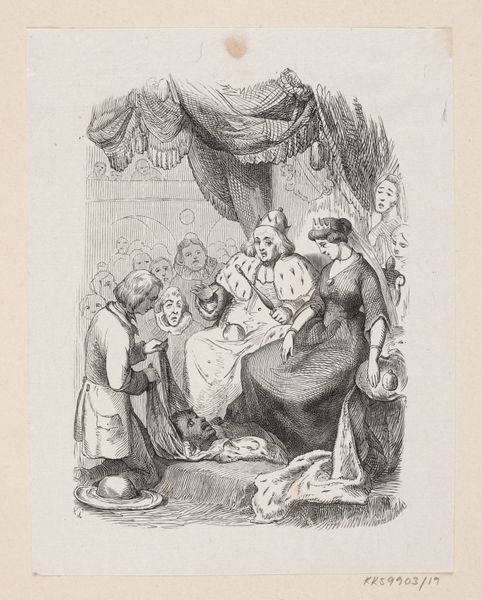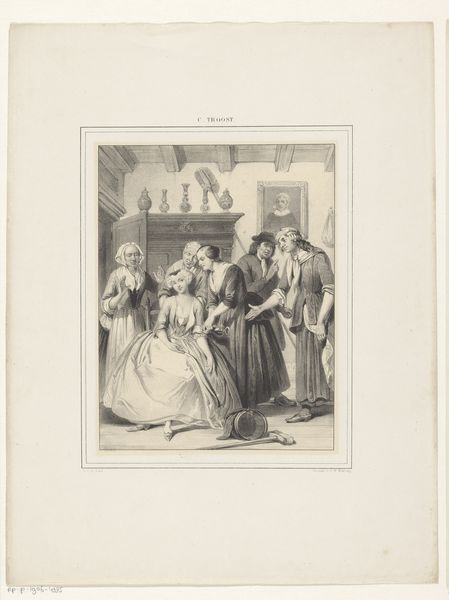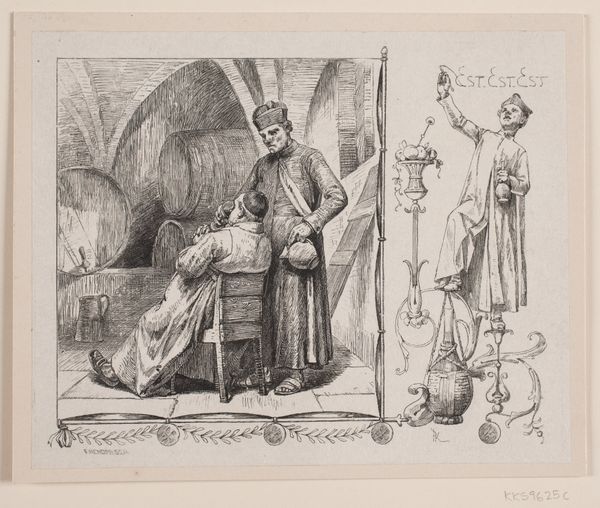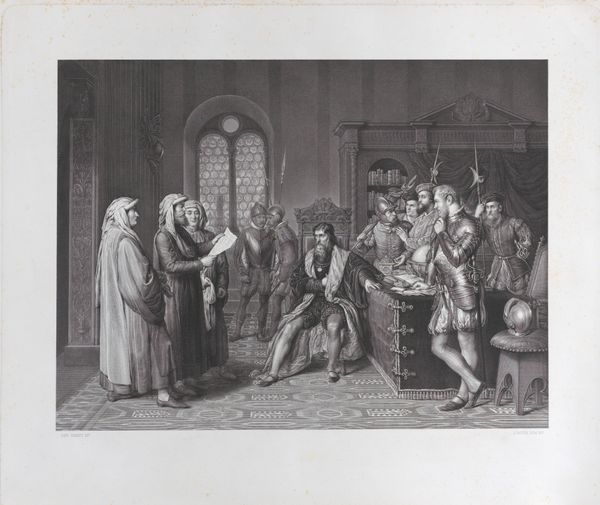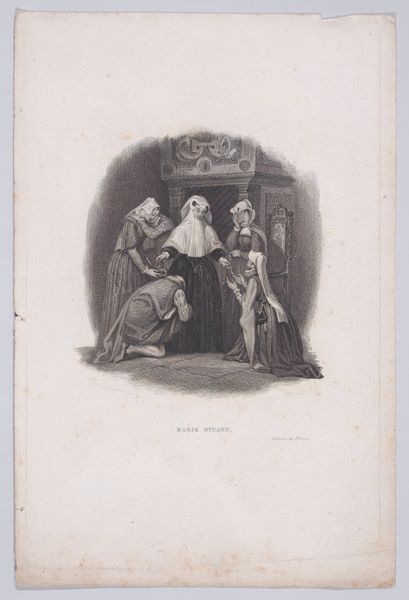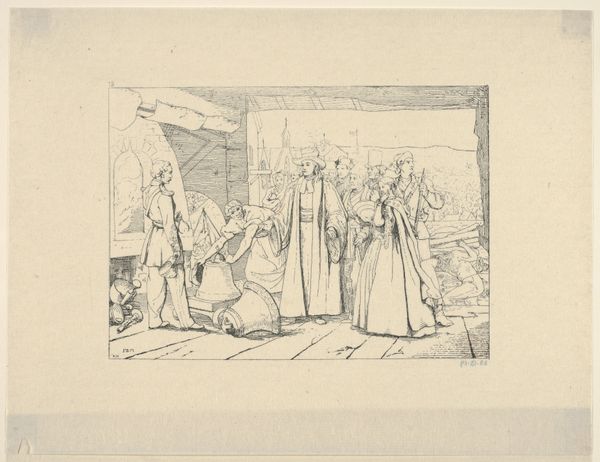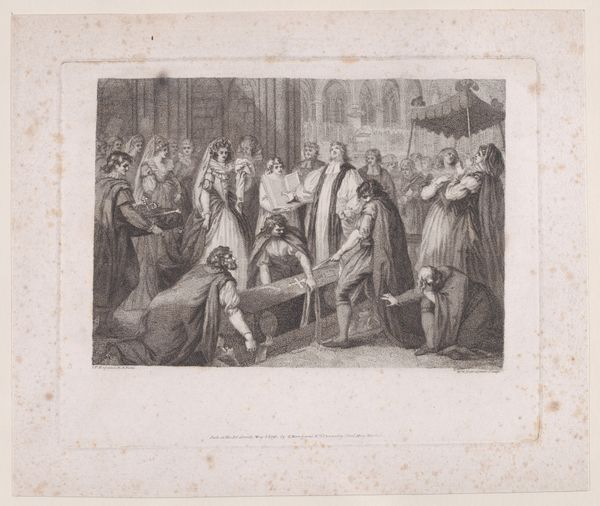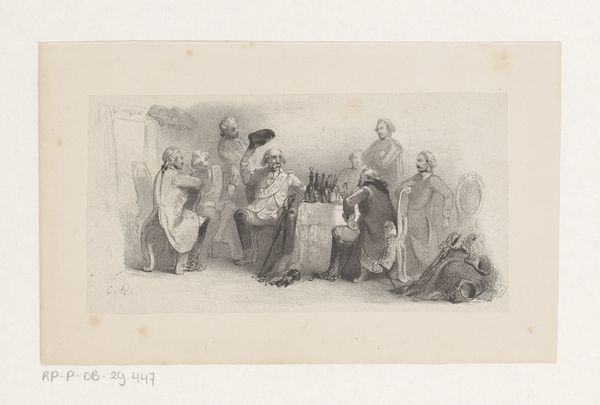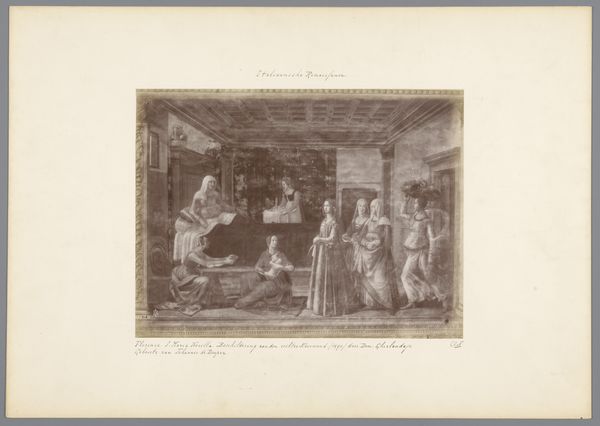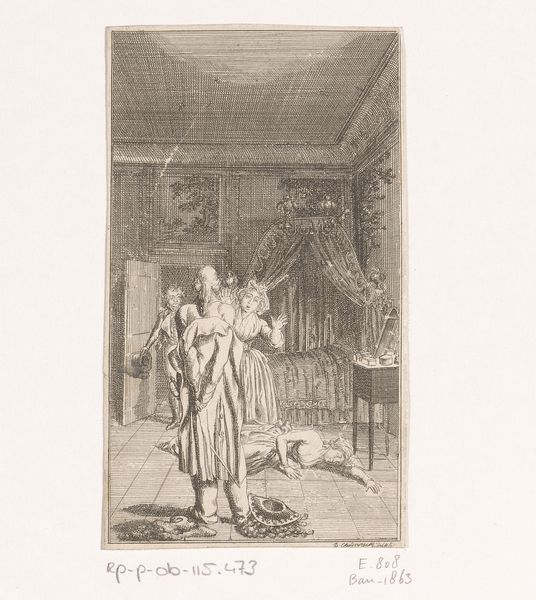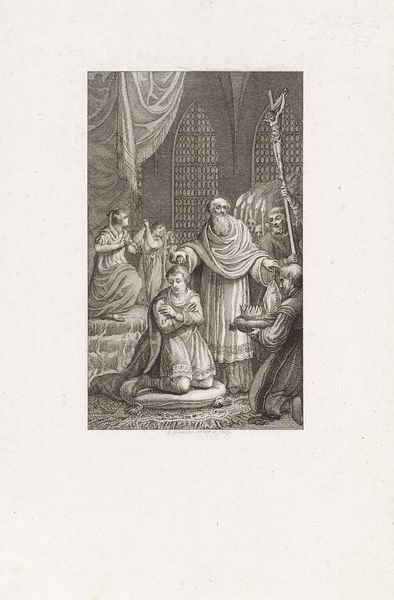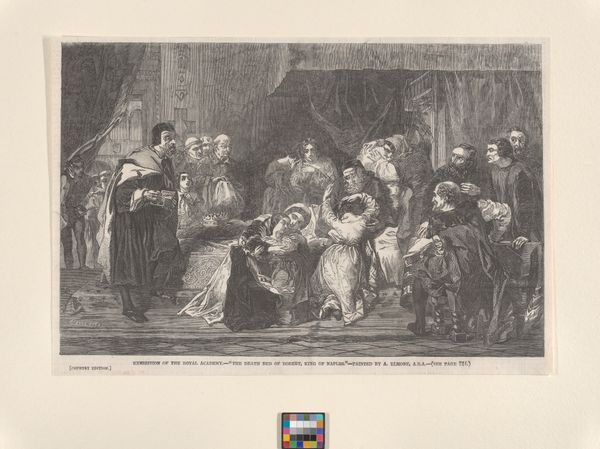
Illustration til "Den sidste Perle" i H.C. Andersen, "Eventyr og Historier", Bind 2 1870 - 1873
0:00
0:00
print, engraving
#
narrative-art
# print
#
genre-painting
#
engraving
Dimensions: 82 mm (height) x 99 mm (width) (bladmaal)
Curator: Here we have an engraving by H.P. Hansen, dating from 1870 to 1873. The title is “Illustration til ‘Den sidste Perle’ i H.C. Andersen, ‘Eventyr og Historier’, Bind 2,” which translates to "Illustration for ‘The Last Pearl’ in H.C. Andersen, ‘Fairy Tales and Stories’, Volume 2.” Editor: It’s remarkable how much narrative he captures in such a small, grayscale print. The mood seems joyful, a sense of shared excitement permeating the room, centered around the held-up baby. Curator: Note how Hansen uses varied line weights to create depth and texture. The cross-hatching, particularly in the darker areas of clothing and within the interior space, is quite meticulous. It's this precision that grants the image a certain crispness. The artist's handling of perspective also invites our eyes to trace a very calculated pathway. Editor: The scene speaks volumes about familial structures and gendered roles of the time, wouldn't you agree? Observe the mother-figure actively settling a second infant into a crib, while the father proudly displays the newborn to the community, including elders. Curator: Interesting point. Looking closely, the composition subtly uses a contrast between the stationary adults in the left section and the action around the crib on the right to emphasize distinct planes. Editor: Beyond that, consider the social implications—this gathering may point to communal support systems for new parents, perhaps uncommon now but quite vital historically. These domestic scenes reflect a normalized, almost idealized, nuclear family. This reinforces patriarchal social structures within 19th century Scandinavia. Curator: We could also argue that focusing so intensely on socio-political readings deflects from the genuine emotional complexity achieved in the interplay between light and shadow, from foreground to background. The material realities cannot be overstated, particularly his strategic choice to depict nuanced expressions on a smaller scale. Editor: And it is that material reality that reinforces an elite vision of 19th century family life. It all exists to convey dominant values within a cultural hierarchy, don’t you think? Curator: It does seem, however, we've opened new channels for looking beyond face value through a formal approach, appreciating not just meaning, but also mechanics. Editor: Precisely, and in merging our perceptions, the social layers begin to rise as much as formalist intention does, making the whole image accessible in different dimensions.
Comments
No comments
Be the first to comment and join the conversation on the ultimate creative platform.
